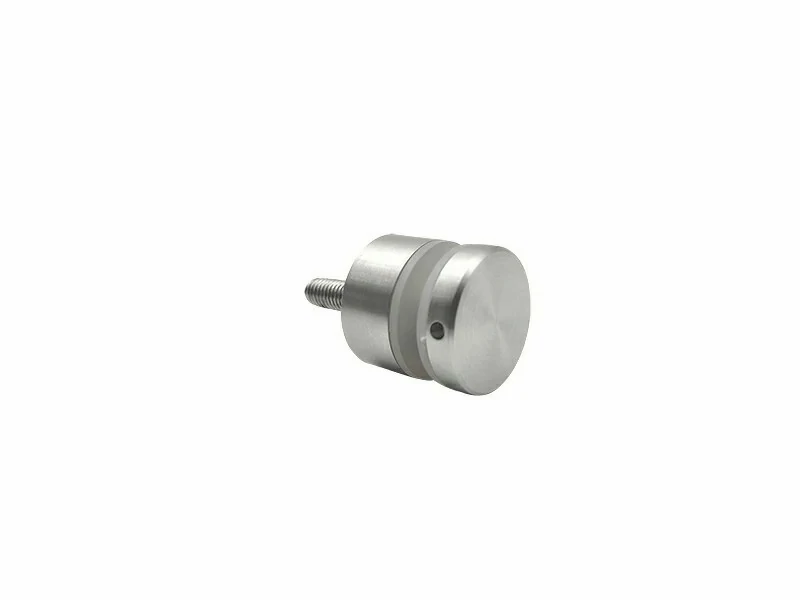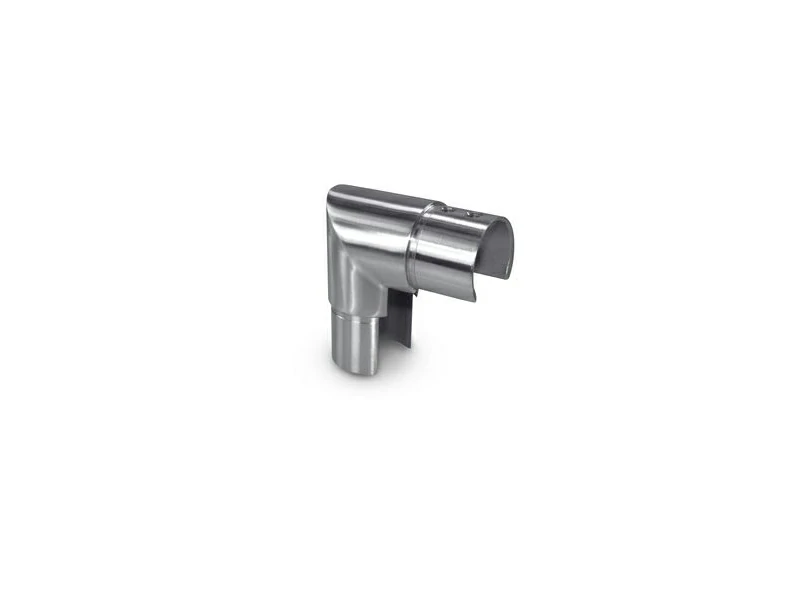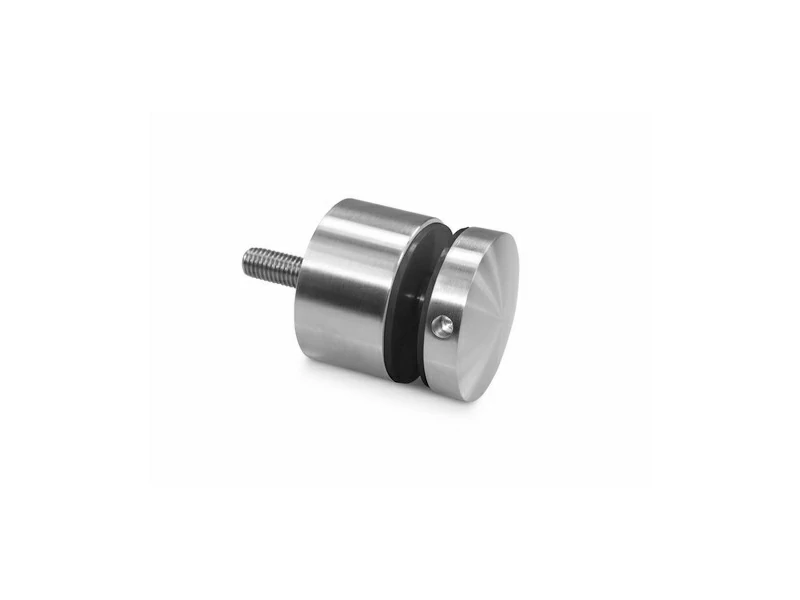Glass railing standoffs are specialized hardware components used in the installation of glass handrail systems. These glass standoffs are used to securely mount glass panels to walls, beams, or other supporting structures in railings.
The standoffs are typically made of durable materials such as stainless steel or aluminum and are attached to the substrate, such as the floor or the side of a staircase, using screws or bolts. They come in a cylindrical or cubic design and are designed to hold the glass panels securely in place, creating a secure and visually appealing barrier.
Glass railing standoffs are popular in contemporary architectural and interior design due to their ability to create an open and transparent look while maintaining structural integrity and safety. They are often used in commercial spaces, modern homes, and public buildings where a minimalist and elegant handrail solution is desired.
Benefits of using glass railing standoffs
- Aesthetic Appeal: Glass handrail standoffs provide a modern and sleek look,providing unobstructed views and a sense of openness in the space where they are installed.
- Durability: Standoffs are typically made of durable materials such as stainless steel or aluminum, which provide strength and stability to glass handrail systems.
- Safety: When installed correctly, glass handrail standoffs securely hold the glass panels in place, creating a safe barrier while maintaining a minimalist and elegant appearance.
- Versatility: They can be used in various architectural and interior design environments, including commercial spaces, modern homes, and public buildings, as they are able to complement a variety of design styles.
- Easy Maintenance: Glass railing standoffs are relatively easy to clean and maintain, making them a practical choice for long-term use.
- Overall, the use of glass railing standoffs enhances the visual appeal of the space, provides structural support, and contributes to a contemporary and sophisticated design aesthetic.
Types of stainless steel glass standoff
There are many types of glass handrail standoffs to choose from, each offering unique features and aesthetics. Here's a breakdown of some common categories:
By Shape:
- Cylindrical: The most classic and versatile option, offering a clean and modern look. They come in various diameters and heights to suit different design preferences and glass thicknesses.
- Square: Another popular choice, providing a more contemporary and architectural feel. Square standoffs can be found in various sizes and finishes to match your style.
- Rosette: These decorative standoffs feature a wider base with intricate patterns or textures, adding a touch of elegance and visual interest to your railing.
- Linear: For a minimalistic and streamlined look, consider linear standoffs, which resemble narrow bars or rectangular blocks. They're often used in conjunction with thin handrails to create a sleek and unobtrusive appearance.
- Custom Shapes: Some manufacturers offer custom-designed standoffs in unique shapes or patterns to achieve a truly personalized look for your railing.
By Material:
- Stainless Steel: The most common material, offering excellent durability, corrosion resistance, and strength for secure glass mounting. Choose from brushed, polished, or satin finishes to match your décor.
- Aluminum: A more lightweight and budget-friendly option than stainless steel, but may not be as strong or corrosion-resistant. Suitable for indoor applications or mild climates.
- Brass: Adds a warm and classic touch to your railing, particularly with antique or traditional design styles. Requires regular maintenance to maintain its luster.
- Glass: For an ultra-modern and seamless look, glass standoffs can create the illusion of floating glass panels. Requires careful selection of tempered glass and skilled installation for safety.
By Function:
Fixing Standoffs: These provide a simple and permanent installation solution for your glass panels.
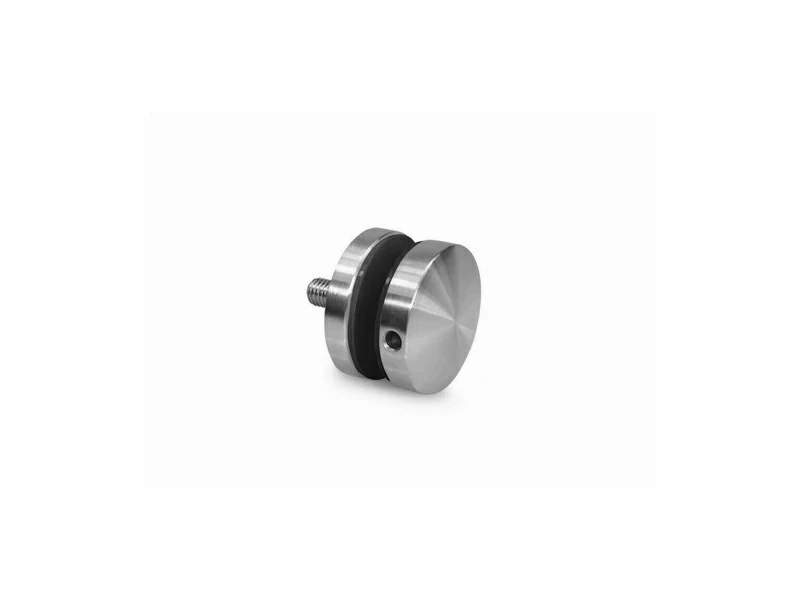
Adjustable Standoffs: Allow for minor adjustments to the alignment of the glass after installation, which helps compensate for uneven surfaces or small errors.
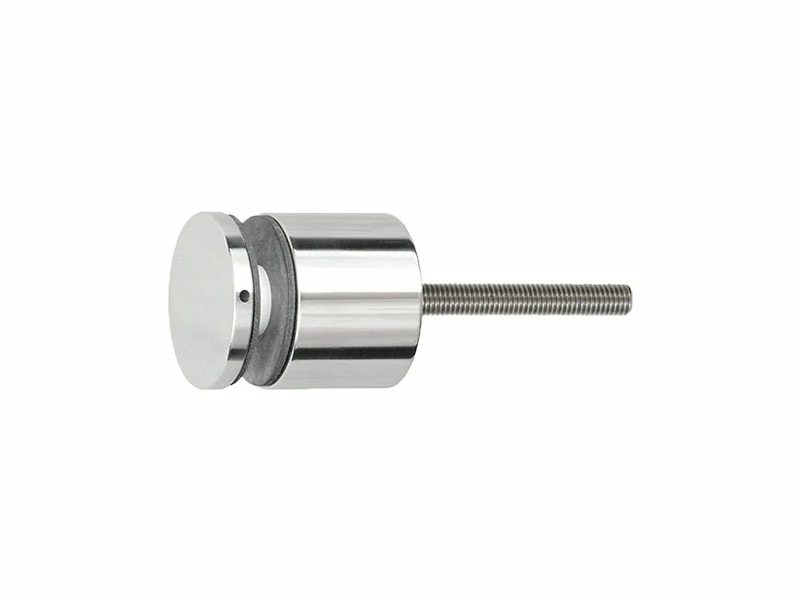
Self-Leveling Standoffs: Automatically adjust to compensate for slight inclines or irregularities in the mounting surface, ensuring a perfectly level glass panel.
